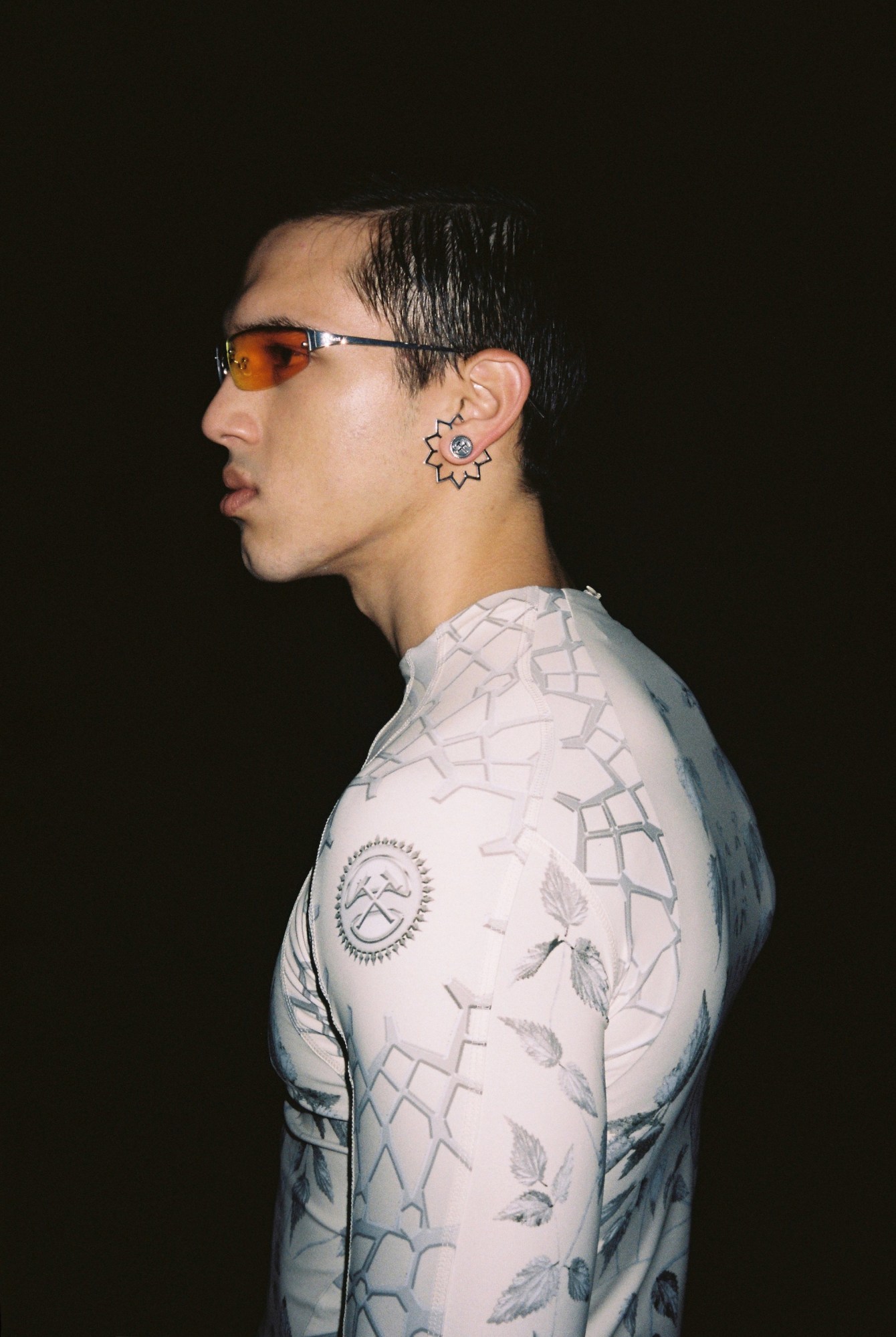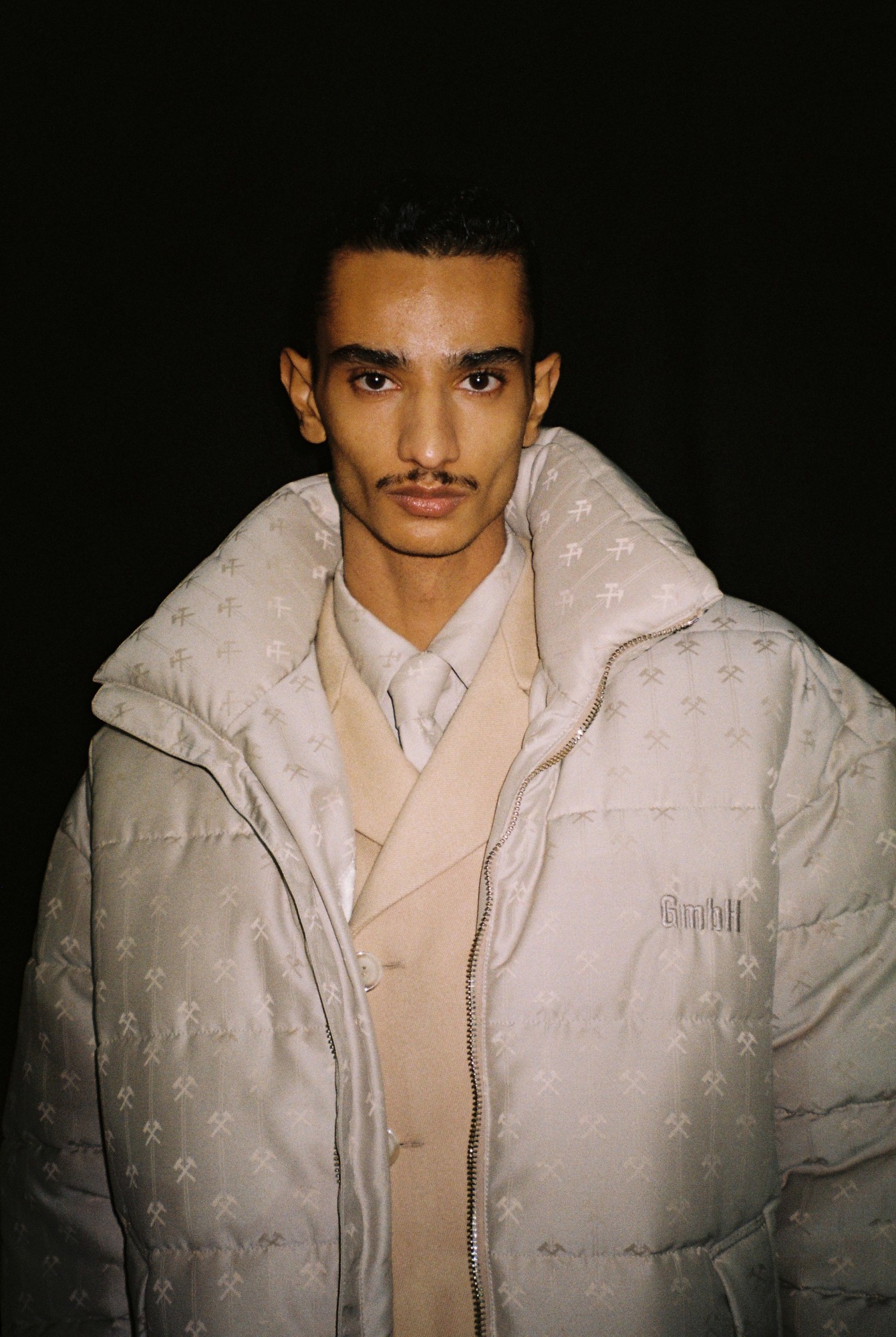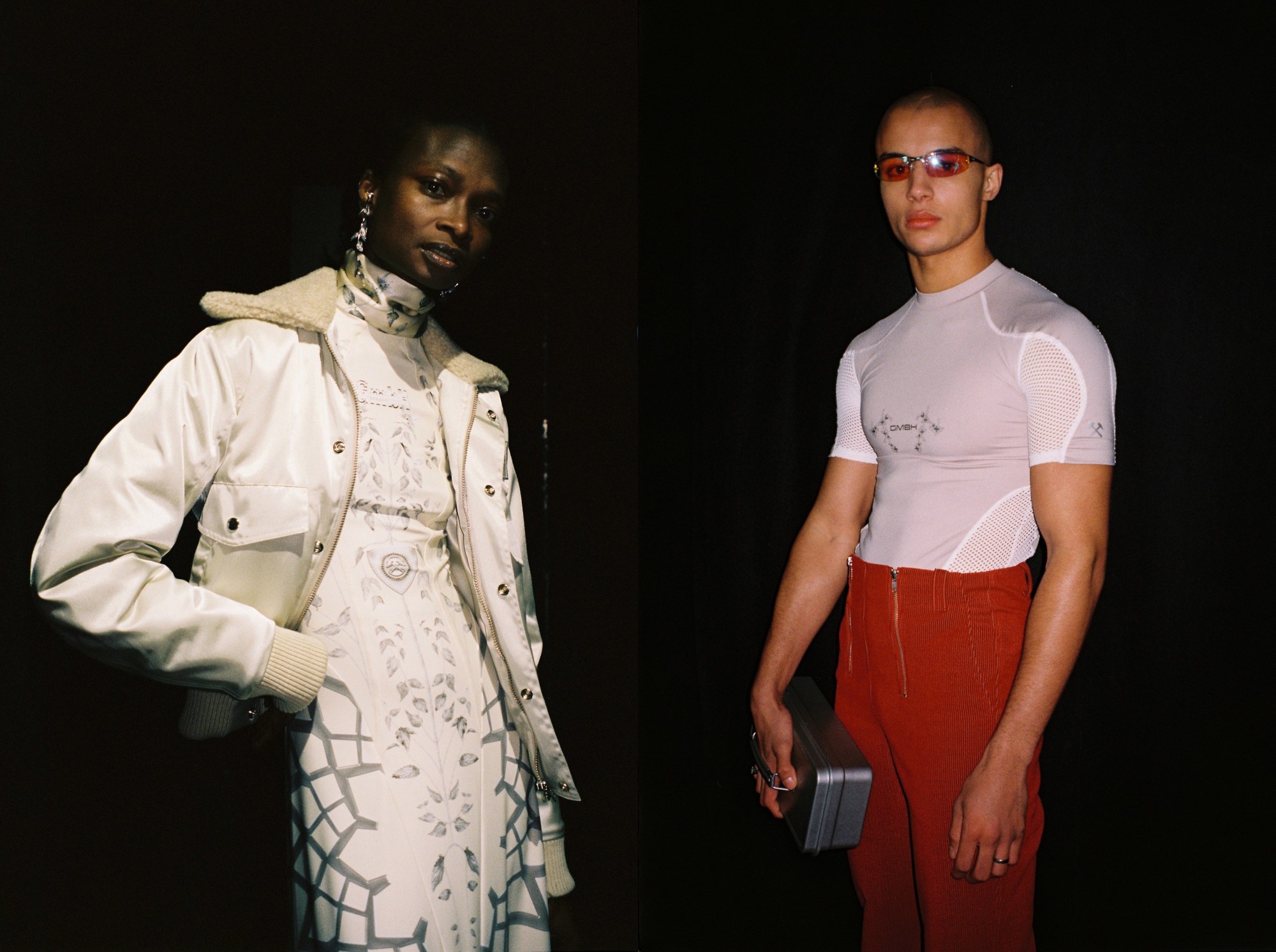“There’s this melancholy that comes from always being told we’ve gone past the point of no return,” Benjamin Alexander Huseby, one half of fashion collective GmbH, explained backstage in the moments after the autumn/winter 19 show back in January. “The prevalent mood is so negative, it’s this ‘the end of the world is nigh’ feeling,” he continued. “So our starting point was imagining an escape to a new world, a new civilisation with GmbH being its corporation.” “Leaving this planet is the ultimate migration, right?” Serhat Isik added. Entitled Rare Earth, GmbH’s catwalk presentation was more than a fashion show. Presented on the night of the super blood moon eclipse in Peripat, one of Paris’ most notorious clubs, located on the outskirts of the city, there was no escaping an ‘end of days’ feeling and GmbH’s answer to it was to imagine a post-Earth existence.

When i-D Germany spoke with the pair in the weeks after their LVMH Prize nomination back in 2017, they admitted that they “didn’t have a clear plan of how exactly the project would unfold” when they founded the label just a year earlier. As they’ve remixed elements of underground club culture with cross-cultural references, their wardrobe has evolved and their collective has grown. “We are really moved by seeing the cast, of which many have become friends and family,” they explained as they exclusively shared Davit Giorgadze’s backstage images with i-D, “not only for their beauty, but that we have been able to create a kind of community.” Today, there’s a plan. Today, GmbH is more than a fashion label, it’s a family, it’s a safe space, it’s a platform encouraging positive change.
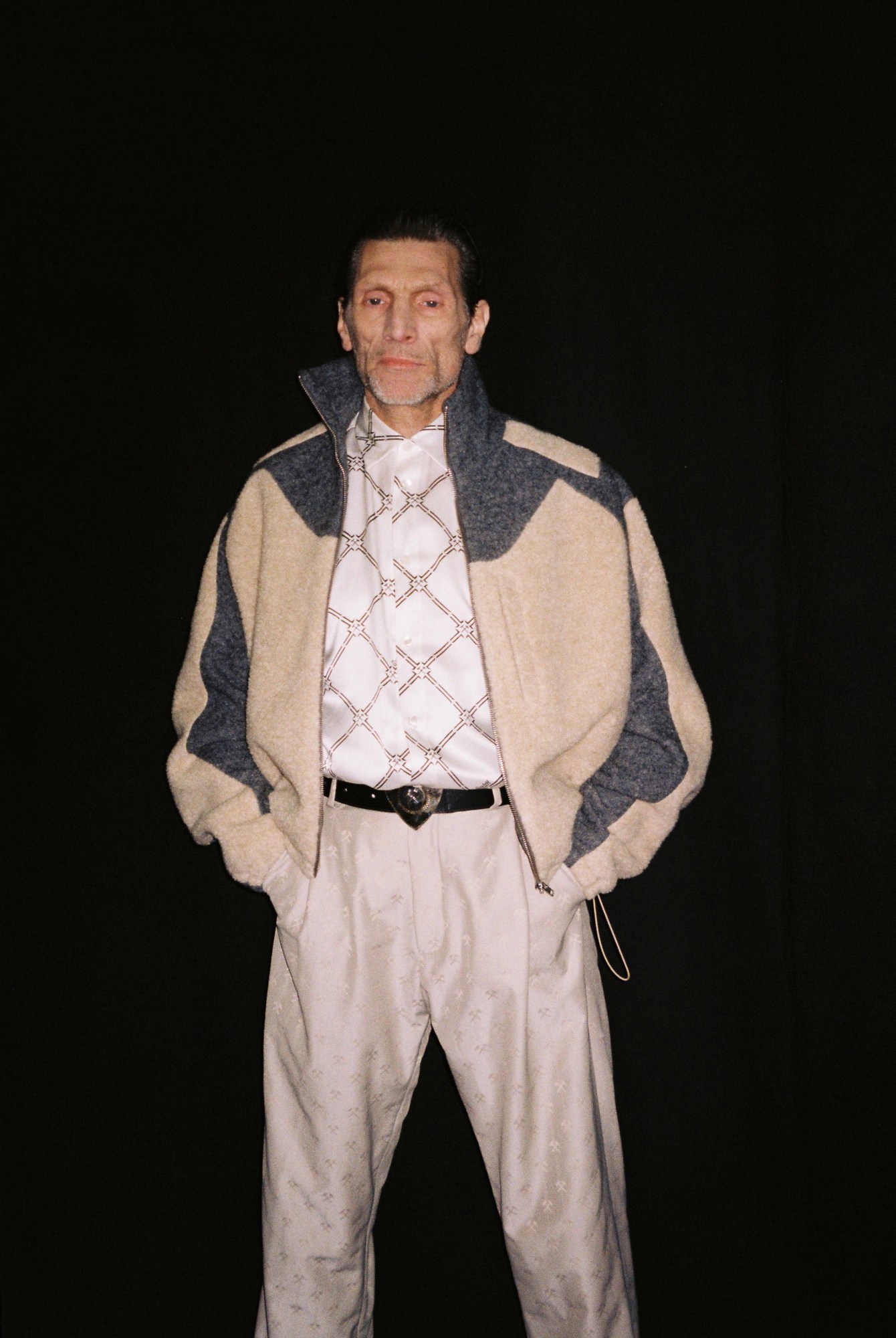
“This season started with a kind of optimism, which then turned it into disbelief, angst and anger,” the design duo explained over email. “Our summer show, Survival Strategies, was trying to learn from the resilience of our mothers, and now with Rare Earth there’s this deep melancholia and sense of loss, due to the irreversible damage we have caused to our planet.” Climate change may well be complex but there’s a simple and disturbing fact: we only have 12 years left to limit global warming to 1.5 degrees, anything beyond 1.5 degrees, and we’re talking extreme threats to civilisation, to the entire natural world. This isn’t project fear, this is project reality, the crisis has arrived, and we have a deadline. As i-D Senior Editor Clementine de Pressigny noted in a recent feature: “When faced with a choice between ensuring the survival of living things on the Earth, or not, you’d think it was a fairly straightforward decision. And yet, governments around the world are currently choosing the latter.”

Reacting to this inaction, Alexander Huseby and Isik transported their shapeshifting community to another planet. “We are being told we have gone beyond the point of no return, but does this mean the end to humanity or Earth? Climate change is already causing mass migration, and it’s very likely in our lifetime we will have some gargantuan ecological disasters. But this doesn’t mean change cannot happen through activism, politics and scientific developments.” As the next generation follow the lead of Swedish schoolgirl climate change warrior Greta Thunberg by refusing to allow the rest of the world to ignore the biggest threat to humanity ever faced, there’s hope. “It’s exciting to see young people demanding change,” they add.
During her recent Women of the World appearance at London’s Southbank Centre, the award-winning author, journalist and social activist Naomi Klein reflected on the power of these protests and implored that, “rather than debate whether or not skipping school to take to the streets is truancy, we should be leaving our desks to join them as all of our lives are on the line.” The time to act is now.
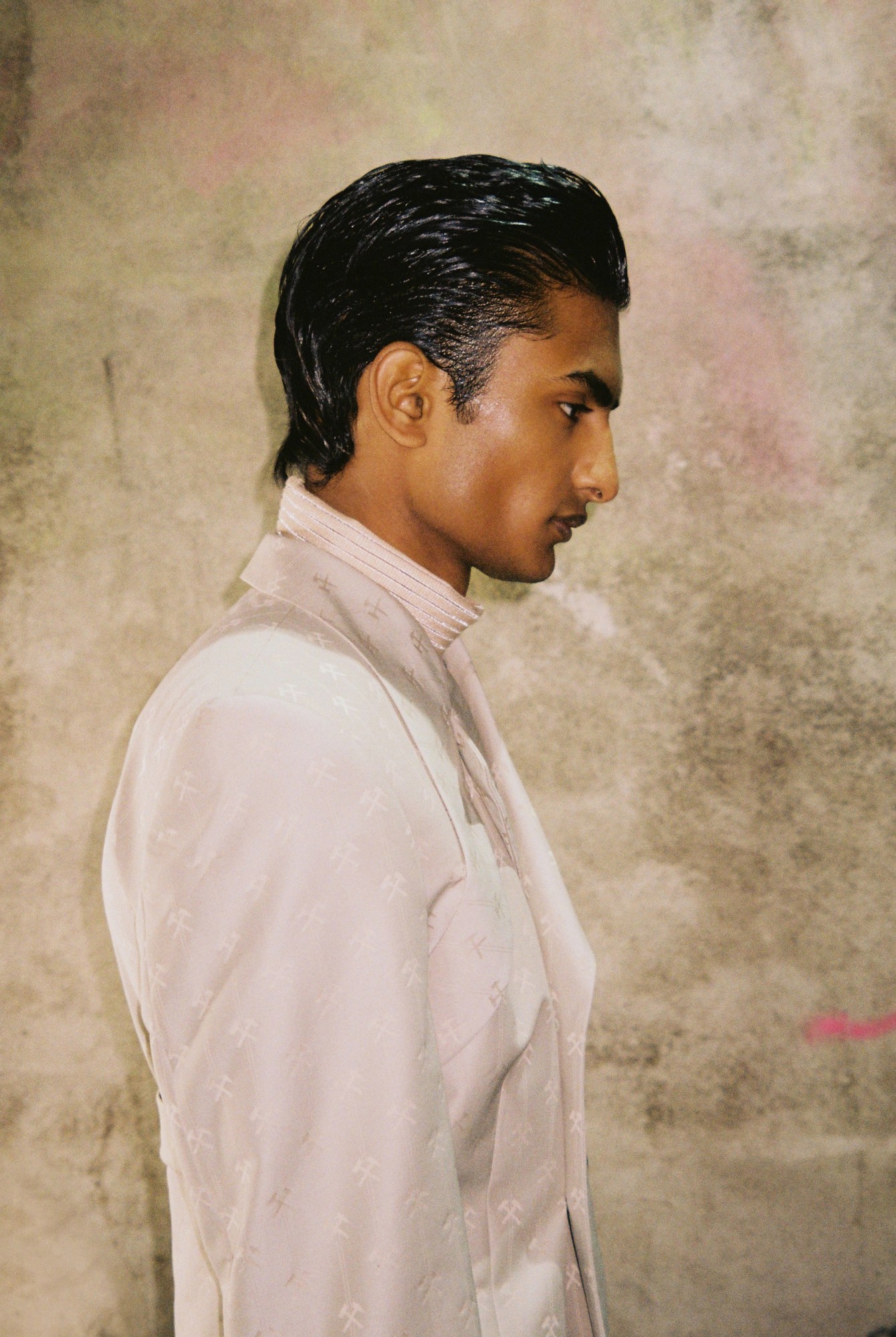
The show date might have been assigned by the Paris Fashion Week Federation, but it could not have been more apt as it fell on a rare total lunar eclipse, a super blood wolf moon. “As this show was staging a possibly very finite situation on Earth, it’s fitting that the last similar planetary constellation occurred in 1517, and was followed by events that gave birth to modern geopolitics, including the Reformation, the fall of the Mamluk Sultanate and more,” the duo add. As the timer runs down on all of our futures, we could do with another seismic sociopolitical shift. “If people take just one thing away from this season, it’s that there are ways we can create our own history and future. We should not just accept the narrative given to us. We can imagine new utopian worlds and ways of life. Ursula Le Guin created this term ‘worlding’ for creating new worlds. Learning from Sun Ra and Afrofuturism, we are imaging a kind of Brown Futurism, where we are fully in control of our own history.”
